Syzygium polyanthum (Wight) Walp.
| Etymology | Genus | After Laurent Garcen, a 18th century French botanist |
|---|---|---|
| Species | From the common name Mangosteen | |
| Family | Myrtaceae | |
| Synonyms | Eugenia polyantha Wight | |
| Common Names | Salam, Indonesian Bay Leaf, Daun Salam | |
| Status | Native: Least Concern | |
| Form | Tree | |
| Native Distribution | Indochina, Malaysia, Singapore, and Indonesia | |
Diagnostics:
Syzygium polyanthum can be easily identified from its sparse yet well distributed crown (this requires some experience). The bark is greyish and cracking. The leaves are the most diagnostic: being oppositely arranged, elliptic, and have secondary venation that is close-looped. It smells distinctively of Jambu when the leaves are crushed.
Interesting Facts:
The Salam has consistently been one of the most commonly planted trees in Singapore. In both 1997 and 2013, it was ranked 14th in cultivated abundance (Timothy, 2013). It is also seemingly common in secondary forests. Birds love them for the fruits; and for this reason, it will be really unfortunate for car owners to park their vehicles underneath them during the fruiting season. I have seen this first-handed; avoid at all costs!
Salam is commonly used in Indonesian cuisine, like soto, to impart a distinct flavour and aroma to the soup.
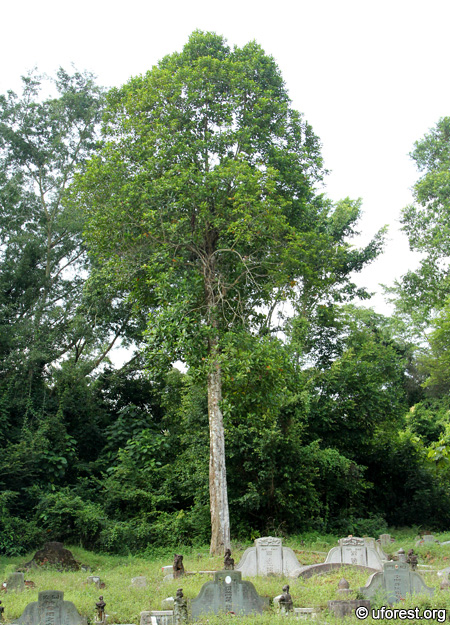
A large Salam in Bukit Brown Cemetery.
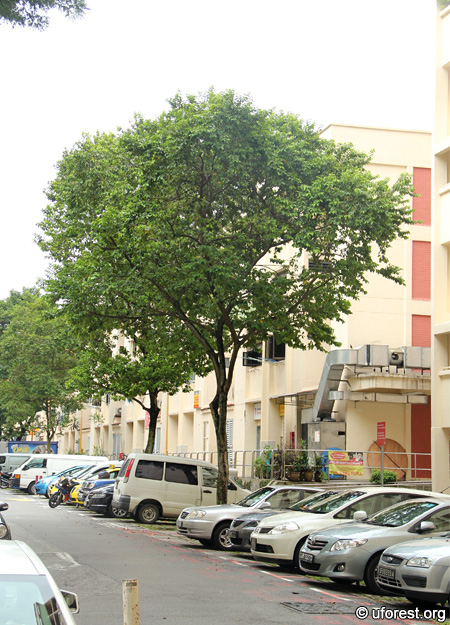
A smaller, cultivated Salam at a carpark.

Characteristic "cracking" bark.
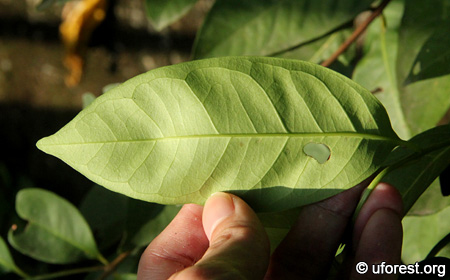
Most important feature is the shape and venation.
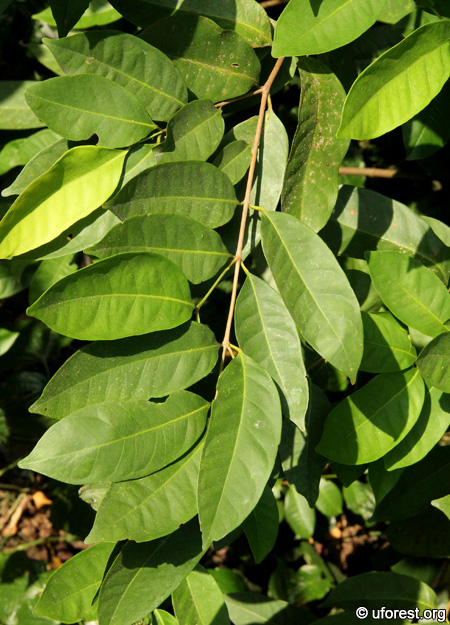
Typical branching.

Flowers are small and white.
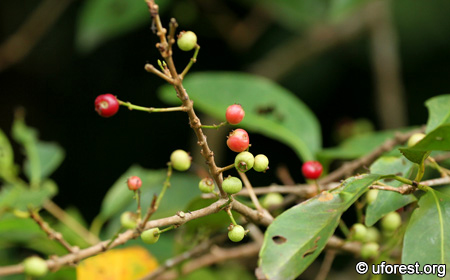
Fruits which ripen to red.
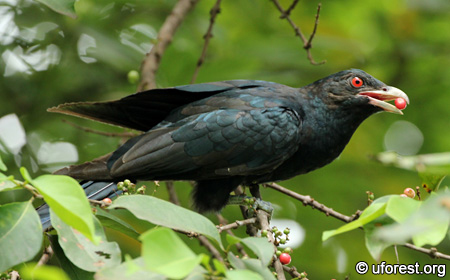
A male Asian Koel feeding on the fruit.
References
Timothy A. (2013) Living in a Garden: the Greening of Singapore. National Parks Board, Singapore. 200 pp.Author: Siyang
Posted: 2014-09-07 / Modified: 2025-10-27